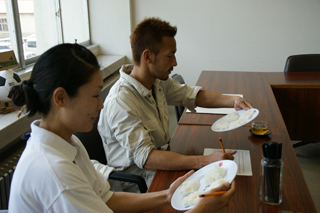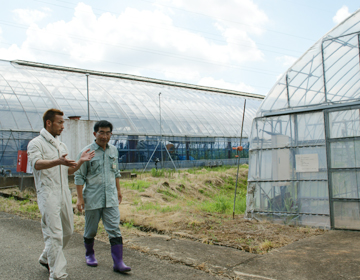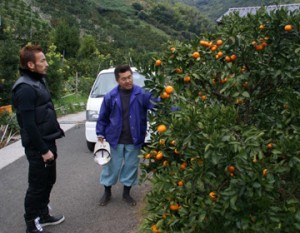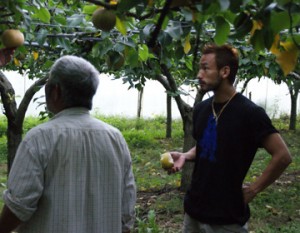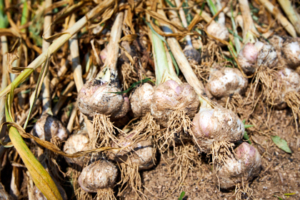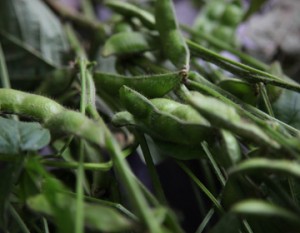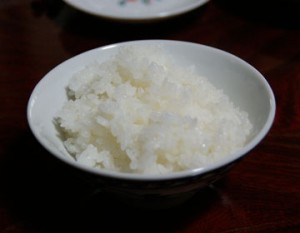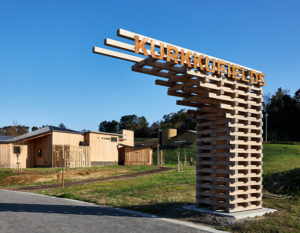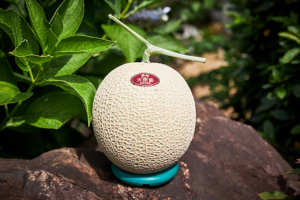Birthplace of “Koshihikari”
”Koshihikari ”is a standard brand rice that most people have eaten, and the birthplace of ”Koshihikari is Fukui Agricultural Experiment Station. This is a research institute that conducts research to develop improved methods of cultivation as well as selective breeding for rice, fruit and vegetables.
Nakata visited the research facility in mid-July when the rice flowers in full bloom.
Rice flowers are the chaff of the ear and is very small. Over a period of about a month, the small flowers are cross pollinated with various varieties.
Nakata had a try at the cross pollination process.
There cannot be any movement in the air to prevent the pollen from being spread, and the room needs to be kept around 40℃ to facilitate the blossoming of the flowers.
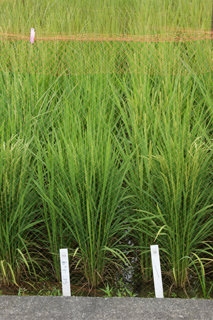
Repeating cross pollination to create better rice
First, the rice plant, referred to as ”bohon” or mother plant, is immersed in hot water of about 43℃ to stop the pollen’s function. After about 7 minutes, the rice plant is removed from the hot water, and any unopened flowers are removed, one by one with scissors. Then pollen from the ”fuhon” (father plant) is then sprinkled on to the ”bohon”. The pollinated flowers transform into rice which will be used as seeds in the following year.
About 200 to 250 pairs are bred annually, resulting in nearly 100 thousand varieties of rice.
From these, 6000 of the best varieties are selected, and their seeds are planted in the following year. The flowers are bred again the following year when they begin to bloom. Because it takes several years to determine the good varieties from the bad ones, only about three varieties can be introduced annually despite the large number of plants that are cross-pollinated.
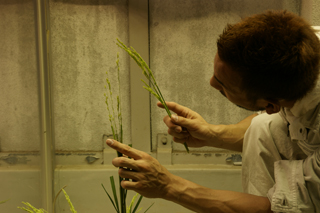
Looking at “food” and “eating” 10 years in the future
The latest hit is ”Ikuhikari”, introduced in 2004. It is shorter than Koshihikari and is easier to grow. The rice remains fluffy even when it is no longer warm, maintaining the ”umami” flavor.
“There are already varieties of rice that taste better than Koshihikari. But Koshihikari is a difficult brand to exceed. Whenever we introduce a new brand, we have the challenge of developing an effective sales and branding strategy.” This was explained to us by a representative of the facility.
The summer of 2010 had record temperatures, and the nationwide average temperature has continued to rise over the last 50 years. Because of this, rice breeding is conducted with consideration for change in the environment as well as people’s lifestyles over the next decade. The delicious rice we are able to enjoy are due to the efforts of people like those working at the agricultural experiment station.
